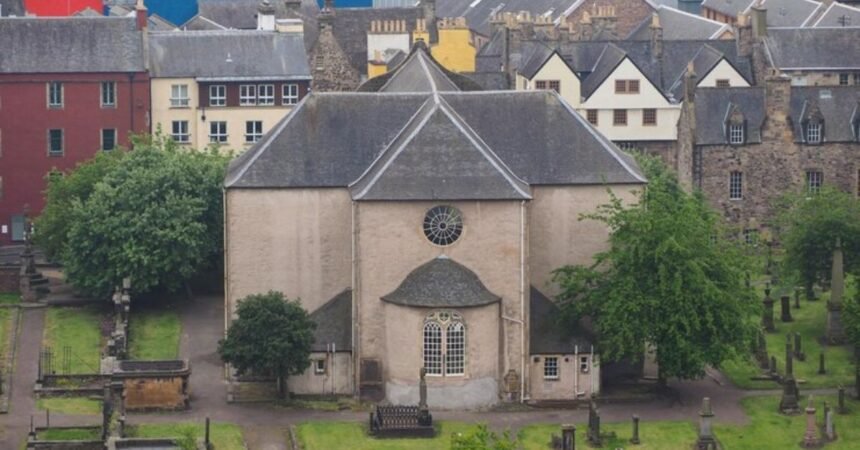Bangar Granshough Belfast is a term that may pique the interest of those familiar with Northern Ireland’s rich historical and cultural landscape. Whether you’re researching local history, exploring the development of urban areas, or curious about its significance, understanding Bangar Granshough and its relevance to Belfast is essential. As one of the city’s notable points of interest, it represents a blend of culture, community, and history that speaks to Belfast’s evolution over the years.
This article delves into the background of Bangar Granshough Belfast, defining key concepts, exploring its importance, and examining how it fits within the broader narrative of Northern Ireland’s history. We’ll also look at real-world applications, challenges, and solutions tied to Bangar Granshough, helping you understand its multifaceted nature.
Detailed Explanation of Bangar Granshough Belfast
What is Bangar Granshough?
Bangar Granshough refers to a particular locality or historical landmark in or around Belfast, Northern Ireland. While the exact origins of the name remain somewhat obscure, it is likely tied to either an old estate, district, or possibly an industrial or agricultural landmark that played a role in Belfast’s development. The term may stem from local dialect or historical records, reflecting a tradition of naming places after prominent families, industries, or geographical features.
Historical Context of Belfast and Its Landmarks
Belfast, the capital of Northern Ireland, is renowned for its industrial history, particularly in shipbuilding, linen production, and engineering. The city’s evolution from a small settlement to an industrial powerhouse in the 19th and 20th centuries brought about the development of many areas, such as Bangar Granshough, each contributing to the economic and social fabric of Belfast.
Over time, these areas have undergone transformations, influenced by economic changes, political movements, and cultural shifts. Landmarks like Bangar Granshough capture elements of Belfast’s rich past, serving as reminders of both its industrial roots and its cultural heritage.
Importance and Benefits of Bangar Granshough Belfast
Preserving Local Heritage
Understanding Bangar Granshough Belfast plays an essential role in preserving the region’s local heritage. Every landmark or locality tied to Belfast’s historical evolution tells a story of its past inhabitants, their livelihoods, and the area’s development. By studying places like Bangar Granshough, historians and researchers can document the impact of industrialization, migration, and urbanization on Northern Ireland.
Enhancing Tourism in Belfast
Bangar Granshough, once explored and well-documented, can also add to Belfast’s tourism appeal. Belfast already boasts several iconic landmarks such as Titanic Belfast, Belfast Castle, and the murals of Shankill Road. If Bangar Granshough holds significant historical value, it could further enrich walking tours or historical exhibitions, offering visitors deeper insight into the city’s lesser-known areas.
Strengthening Community Ties
Many Belfast neighborhoods, like Bangar Granshough, carry with them the collective memories of the communities that once lived and worked there. Researching and revitalizing these areas can help strengthen community bonds, reminding residents of their shared history. These areas could also become focal points for local community projects, heritage trails, or historical societies.
Applications and Use Cases of Bangar Granshough Belfast
As a Cultural and Historical Study Focus
The study of Bangar Granshough can serve as a valuable resource for academics and historians focusing on Northern Irish history, urban development, and social change. The area’s past, whether tied to industrial activities, residential neighborhoods, or agricultural development, offers a snapshot of Belfast’s growth and the shifting socioeconomic landscape over time.
Case Study: Academic Research on Belfast’s Industrial Era
For example, a researcher interested in Belfast’s industrial history may study Bangar Granshough as part of a larger project on the expansion of Belfast during the 19th century. The researcher could uncover historical records, such as census data, maps, or business directories, linking the area to local industries or key events that shaped the city.
Incorporation in Urban Development Plans
If Bangar Granshough is an existing district, it could potentially be incorporated into modern urban development plans. Developers looking to revitalize or modernize Belfast’s neighborhoods could draw on the area’s historical significance to create sustainable, community-friendly projects that reflect the city’s cultural heritage.
Example: Developing a Heritage-Inspired Housing Project
Imagine a housing project or park designed in Bangar Granshough that reflects the architectural styles of Belfast’s historical periods. This could attract residents interested in both modern living and historical aesthetics, while promoting heritage preservation.
As a Destination for Historical Tourism
Bangar Granshough Belfast could also emerge as a notable destination for historical tourism if developed and marketed effectively. Local historians and tourism boards could work together to create tours that highlight not just well-known landmarks but also hidden gems like Bangar Granshough, showcasing the lesser-known aspects of Belfast’s past.
Example: A Guided Walking Tour
A guided walking tour in Belfast could include a stop at Bangar Granshough, where visitors learn about its significance and how it contributed to the city’s development. Historical plaques, detailed explanations, and immersive storytelling could turn the location into a must-visit site for tourists interested in Belfast’s industrial and cultural history.
Challenges and Solutions
Lack of Documentation and Historical Clarity
One of the main challenges associated with studying or promoting Bangar Granshough is the potential lack of historical documentation or clarity regarding its origins. Many small districts or landmarks may not have been well-documented over the years, leading to gaps in knowledge.
Solution: Archival Research and Oral Histories
To overcome this challenge, researchers can dive into archival records such as old maps, local directories, or newspapers to piece together the area’s history. Additionally, oral histories from older residents who lived or worked in Bangar Granshough could offer valuable insights that are not captured in written records.
Balancing Development with Heritage Preservation
Another challenge is balancing modern development with the preservation of historical sites like Bangar Granshough. Belfast, like many cities, faces pressure to modernize while maintaining its cultural heritage.
Solution: Heritage-Led Urban Planning
One solution is to adopt heritage-led urban planning, where developers work with historians and conservationists to integrate historical elements into new developments. This approach allows for economic growth while ensuring that Belfast’s history remains visible and accessible to future generations.
Community Engagement and Awareness
Raising awareness about the historical significance of Bangar Granshough can also be a challenge, particularly if the local community is unaware of the site’s importance or if the area has been neglected over time.
Solution: Local Events and Educational Campaigns
Engaging the local community through events, educational campaigns, and workshops can help raise awareness about the significance of Bangar Granshough. Schools, local historical societies, and community centers can organize events that celebrate the area’s history, helping to foster a sense of pride and ownership.
Conclusion
Bangar Granshough Belfast represents a fascinating yet often overlooked part of Northern Ireland’s historical landscape. Whether it’s tied to Belfast’s industrial heritage, residential development. Or cultural significance, Bangar Granshough offers valuable insights into the city’s evolution. By studying, preserving, and promoting such areas, Belfast can continue to honor its past while looking toward the future.
Revitalizing Bangar Granshough through research, community engagement. And sustainable development ensures that this important part of Belfast’s history remains a vital component of the city’s identity. As more people become aware of its significance. Bangar Granshough can take its place alongside Belfast’s other historical landmarks, attracting tourists, researchers, and residents alike.
FAQs
1. What is Bangar Granshough Belfast?
Bangar Granshough Belfast likely refers to a specific locality or historical landmark in Belfast. Northern Ireland, potentially tied to the city’s industrial or cultural history.
2. Why is Bangar Granshough significant?
Bangar Granshough holds historical significance as part of Belfast’s development, reflecting elements of the city’s industrial, residential, or agricultural past.
3. How can Bangar Granshough benefit Belfast tourism?
By promoting its historical and cultural value. Bangar Granshough can enhance Belfast’s tourism appeal through walking tours, exhibitions, or heritage-focused events.
4. What are the challenges of studying Bangar Granshough?
Challenges include the potential lack of historical documentation and the need to balance modern development with heritage preservation.
5. How can the local community engage with Bangar Granshough?
Local communities can engage through educational campaigns. Historical events, and collaborations with researchers to raise awareness and preserve the area’s history.








